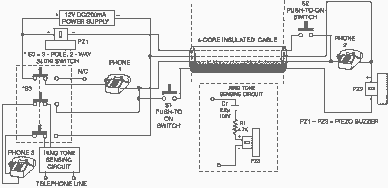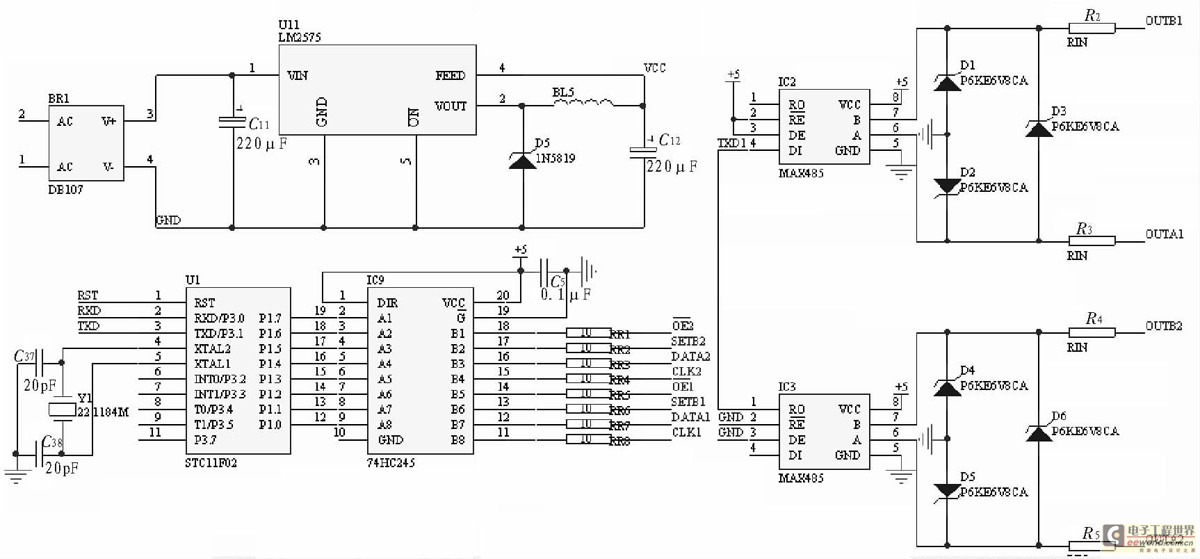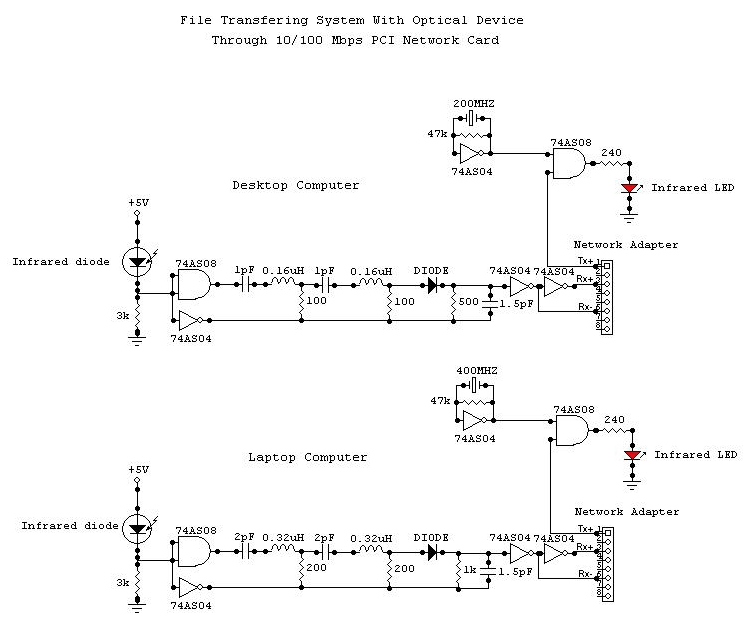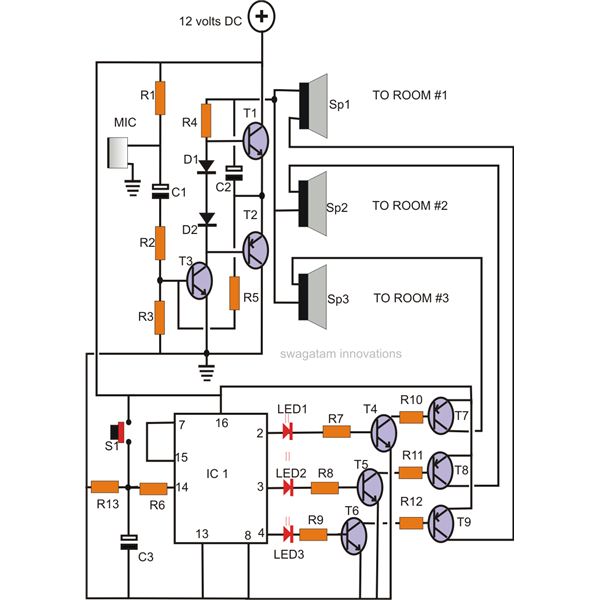
Two line intercom

The circuit presented here can be used for connecting two telephones in parallel and also as a 2-line intercom. Usually, a single telephone is connected to a telephone line. If another telephone is required at some distance, a parallel line is taken for connecting the other telephone. In this simple parallel line operation, the main problem is loss of privacy besides interference from the other phone. This problem is obviated in the circuit presented here. Under normal condition, two telephones (telephone 1 and 2) can be used as intercom while telephone 3 is connected to the lines from exchange. In changeover mode, exchange line is disconnected from telephone 3 and gets connected to telephone 2.
The described circuit facilitates the connection of two telephones in parallel while simultaneously functioning as a two-line intercom system. This configuration allows for the seamless integration of multiple telephones, enhancing communication capabilities without compromising privacy or introducing interference.
In the typical setup, two telephones—referred to as Telephone 1 and Telephone 2—are utilized as an intercom system, enabling direct communication between them. Telephone 3 is connected to the primary telephone exchange line, ensuring that it can make and receive external calls. The circuit is designed to allow a changeover mode, where the line from the exchange can be selectively disconnected from Telephone 3 and connected to Telephone 2, thus allowing Telephone 2 to access the external telephone line when needed.
Key components of the circuit include relays or switches that facilitate the changeover between the internal intercom function and the external telephone line. The circuit may also incorporate resistors and capacitors to manage signal integrity and prevent feedback or interference between the telephones. Proper wiring and layout are essential to minimize crosstalk and ensure that the telephones maintain clear communication, both internally and externally.
This circuit design effectively addresses common issues associated with parallel telephone connections, such as loss of privacy and interference, by enabling a controlled switching mechanism. The implementation of this circuit is suitable for residential or small office environments where direct communication between two parties is often required, while still allowing access to external telephone services.The circuit presented here can be used for connecting two telephones in parallel and also as a 2-line intercom. Usually a single telephone is connected to a telephone line. If another telephone is required at some distance, a parallel line is taken for connecting the other telephone.
In this simple parallel line operation, the main problem is loss of privacy besides interference from the other phone. This problem is obviated in the circuit presented here. Under normal condition, two telephones (telephone 1 and 2) can be used as intercom while telephone 3 is connected to the lines from exchange. In changeover mode, exchange line is disconnected from telephone 3 and gets connected to telephone 2.
For operat 🔗 External reference
The described circuit facilitates the connection of two telephones in parallel while simultaneously functioning as a two-line intercom system. This configuration allows for the seamless integration of multiple telephones, enhancing communication capabilities without compromising privacy or introducing interference.
In the typical setup, two telephones—referred to as Telephone 1 and Telephone 2—are utilized as an intercom system, enabling direct communication between them. Telephone 3 is connected to the primary telephone exchange line, ensuring that it can make and receive external calls. The circuit is designed to allow a changeover mode, where the line from the exchange can be selectively disconnected from Telephone 3 and connected to Telephone 2, thus allowing Telephone 2 to access the external telephone line when needed.
Key components of the circuit include relays or switches that facilitate the changeover between the internal intercom function and the external telephone line. The circuit may also incorporate resistors and capacitors to manage signal integrity and prevent feedback or interference between the telephones. Proper wiring and layout are essential to minimize crosstalk and ensure that the telephones maintain clear communication, both internally and externally.
This circuit design effectively addresses common issues associated with parallel telephone connections, such as loss of privacy and interference, by enabling a controlled switching mechanism. The implementation of this circuit is suitable for residential or small office environments where direct communication between two parties is often required, while still allowing access to external telephone services.The circuit presented here can be used for connecting two telephones in parallel and also as a 2-line intercom. Usually a single telephone is connected to a telephone line. If another telephone is required at some distance, a parallel line is taken for connecting the other telephone.
In this simple parallel line operation, the main problem is loss of privacy besides interference from the other phone. This problem is obviated in the circuit presented here. Under normal condition, two telephones (telephone 1 and 2) can be used as intercom while telephone 3 is connected to the lines from exchange. In changeover mode, exchange line is disconnected from telephone 3 and gets connected to telephone 2.
For operat 🔗 External reference
Warning: include(partials/cookie-banner.php): Failed to open stream: Permission denied in /var/www/html/nextgr/view-circuit.php on line 713
Warning: include(): Failed opening 'partials/cookie-banner.php' for inclusion (include_path='.:/usr/share/php') in /var/www/html/nextgr/view-circuit.php on line 713





